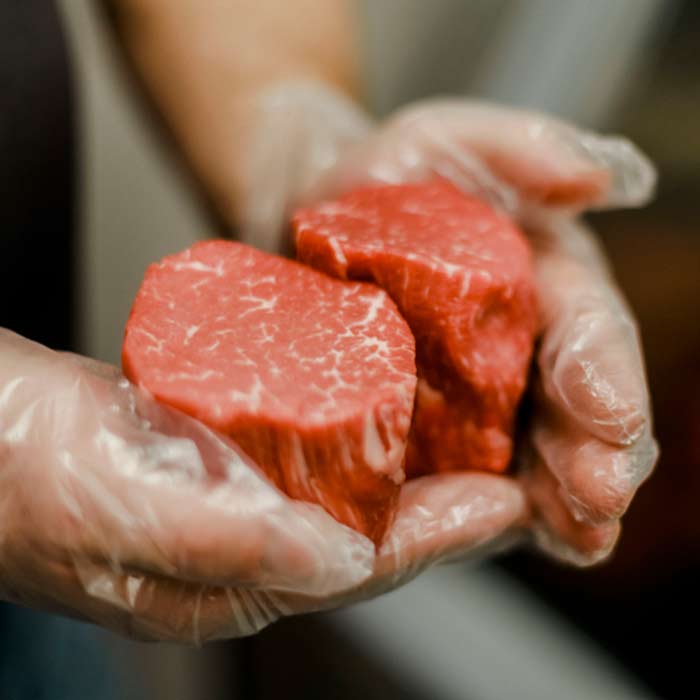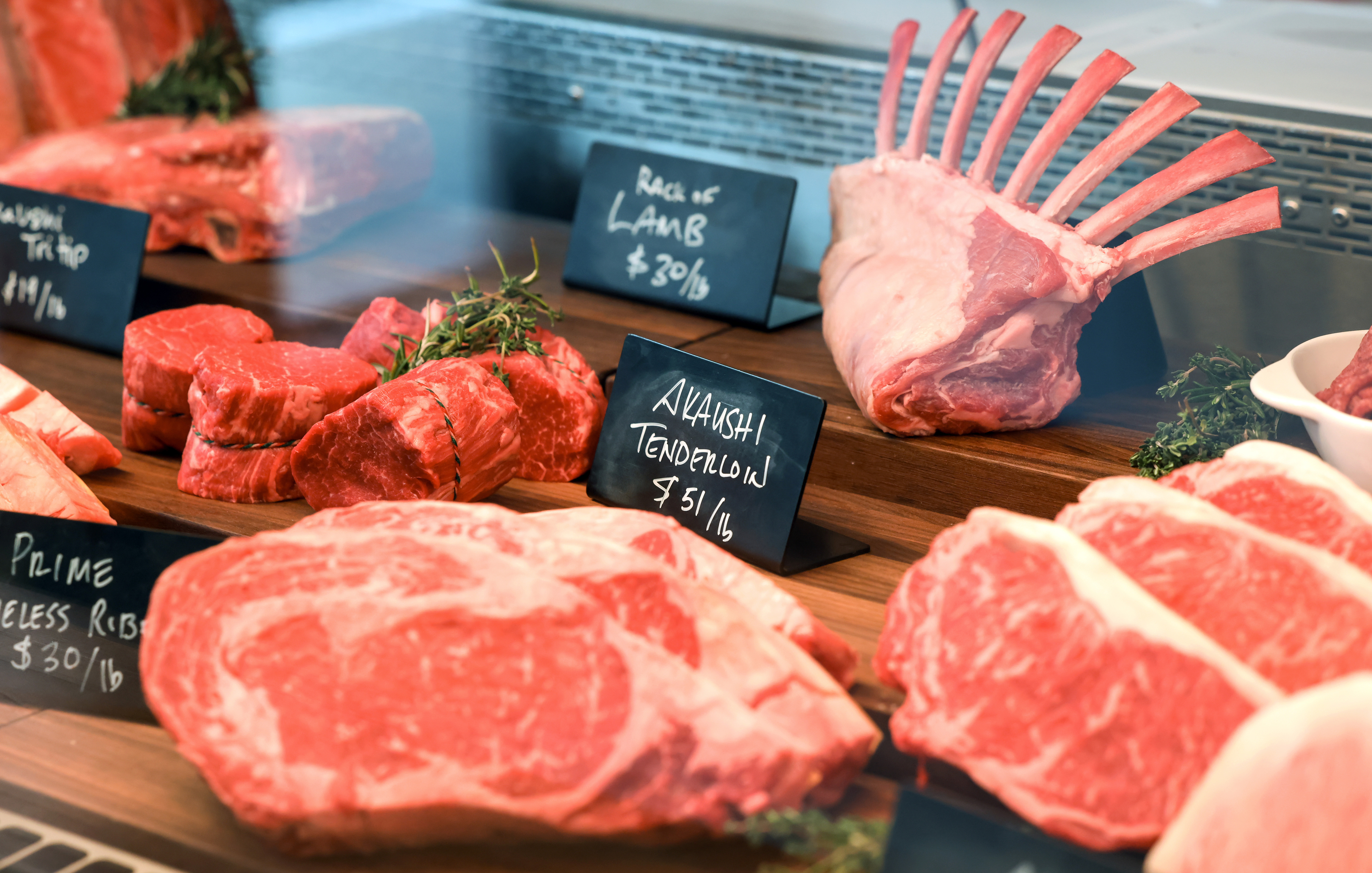Check Out the Local Taste at Bagley Farms Meat Market Edwardsville IL: Fresh and Delicious
Check Out the Local Taste at Bagley Farms Meat Market Edwardsville IL: Fresh and Delicious
Blog Article
Reveal the Art of the Butcher's Cut in a Modern Meat Market
In the ever-evolving landscape of contemporary meat markets, the butcher's cut has actually transcended its conventional origins, combining olden craftsmanship with modern practices. What absolutely establishes the modern butcher apart is their capability to build a deeper connection between customers and the beginnings of their meat.
Advancement of Butchery Methods

The mid-20th century saw butchery strategies further refined by scientific insights right into muscular tissue biology and meat aging, boosting both tenderness and taste. Technologies like vacuum cleaner product packaging and refrigeration prolonged item shelf-life, allowing butchers to branch out offerings and enhance top quality control. This duration additionally marked the surge of specialized devices, such as band saws and meat slicers, which increased precision and performance in meat handling.
The 21st century has introduced electronic technology into the butchery world. Digital systems currently assist in tracking pet provenance and maximizing cuts to meet details consumer choices. In addition, a rebirth in artisanal butchery has arised, blending conventional skills with contemporary understanding to deal with customers seeking ethical and lasting meat alternatives. This development underscores a dynamic interaction in between tradition and innovation, meeting contemporary demands while protecting the craft's heritage.

Comprehending Meat Cuts

Recognizing the ins and outs of meat cuts is essential for both butchers and customers seeking high quality and value. Each cut comes from a various component of the animal, presenting special flavors, appearances, and cooking approaches. Mastery of these differences not just enhances cooking experiences yet additionally takes full advantage of the energy of each carcass. For butchers, exact cuts reflect skill and respect for the craft, ensuring marginal waste and optimal return.
The main groups of meat cuts consist of primal, sub-primal, and retail cuts. Primitive cuts, such as the loin, rib, and chuck, are the big sections initially divided from the carcass. Butchers after that damage these down better into sub-primal cuts, prior to finally generating retail cuts offered to consumers, like ribeye or tenderloin. Each phase needs careful focus to anatomical framework and muscle composition.
Comprehending muscular tissue structure is critical; muscles used a lot more often by the animal tend to be harder and are best fit for slow cooking approaches, while less-used muscle mass, like those found in the loin, are much more tender and ideal for cooking or roasting. Familiarity with these differences equips consumers to make informed selections, boosting their culinary endeavors.
Choosing Quality Meat
Choosing the appropriate meat involves even more than just selecting an aesthetically enticing item from the display. The art of picking quality meat calls for a critical eye and expertise of particular features that represent quality and quality.
Secondly, consider the marbling, which describes the white flecks of fat within the muscle. Appropriate marbling is a key indicator of inflammation and flavor, as it thaws throughout food preparation, enhancing the meat's juiciness. Remember, higher marbling commonly correlates with exceptional quality cuts, such as USDA Prime.
Structure is an additional crucial factor; meat should feel strong to the touch, not slimy or overly soft. Furthermore, be mindful of the fragrance. Fresh meat should have a clean, neutral scent, without any kind of sour or repulsive smells.
Coupling Cuts With Cooking Methods
Efficiently matching cuts of meat with the suitable food preparation techniques is necessary for attaining optimal flavor and appearance. Different cuts vary in tenderness, marbling, and connective cells content, each requiring details methods to open their potential. For circumstances, tender cuts like filet mignon and ribeye, with try this site their fundamental marbling, benefit from high-heat, quick-cooking techniques such as barbecuing or pan-searing. These approaches enhance the meat's natural tastes and guarantee a juicy finish.
Conversely, harder cuts like brisket and chuck roast are abundant in collagen, which breaks down into gelatin when cooked slowly. These cuts are suitable for braising or slow-moving roasting, enabling the meat to soften with time and establish deep, complicated flavors. In a similar way, cuts such as brief ribs and pork shoulder prosper with slow-cooking techniques, where prolonged cooking times transform their durable appearances into succulent dishes.
Lamb shanks and oxtail, which call for extended cooking to tenderize, are ideal candidates for stewing or slow simmering. These approaches coax out abundant, passionate flavors while keeping dampness. By understanding the one-of-a-kind qualities of each cut, chefs and home cooks alike can raise their cooking developments, ensuring each recipe is both pleasing and remarkable.
The Butcher's Duty Today
Navigating the advancing landscape of the contemporary meat market, the butcher's function today prolongs beyond simple preparation of cuts. Contemporary butchers are culinary craftsmens, teachers, and advocates for lasting techniques. They connect the space in between the ranch and the fork by making important source sure moral sourcing, understanding animal husbandry, and focusing on transparency in the supply chain. This change reflects the growing consumer need for quality over amount, where provenance and pet welfare are extremely important.
Along with crafting accurate cuts, butchers currently engage directly with customers, using cooking guidance and customizing selections to fit more tips here specific needs and choices. Their experience in meat aging, marbling, and flavor accounts encourages consumers to make educated choices, enhancing their culinary experiences. This tailored service exemplifies the butcher's progressing duty as a trusted consultant in the cooking area.
Additionally, butchers are critical in lessening waste, making use of whole animals to produce varied items such as sausages and stocks - bagley farms meat market edwardsville il. This thorough strategy not just respects the animal but also straightens with contemporary sustainability goals. In this method, the contemporary butcher embodies both tradition and development, adapting to an ever-changing market while preserving the creativity and honesty of their craft

Conclusion
Proficiency in understanding diverse meat cuts and high quality signs empowers butchers to offer informed suggestions, aligning specific cuts with optimal cooking approaches. By honoring historical practices while accepting modern needs, the butcher's function remains crucial in today's advanced meat market.
Report this page